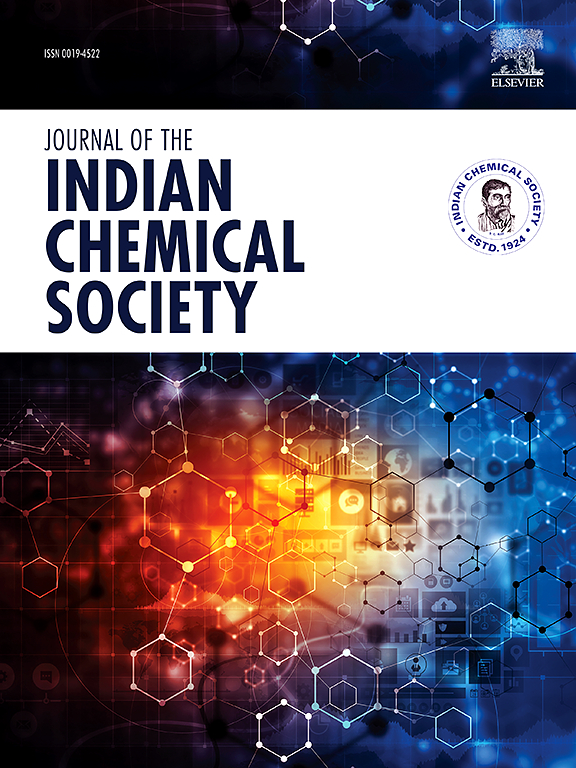Synergistic effects in the thermal conversion of sawdust-pine needles biomass blend: A comprehensive kinetic approach
IF 3.2
4区 化学
Q2 CHEMISTRY, MULTIDISCIPLINARY
引用次数: 0
Abstract
Biomass utilization for renewable energy is gaining attention for mitigating climate change and reducing fossil fuel dependence. However, limited knowledge exists on the pyrolysis behavior and kinetics of biomass blends. This study assesses the thermal degradation behaviour and kinetic characteristics of biomass blend (BB) of sawdust (S) and pine needles (PN). Under nitrogen atmosphere, experiments were conducted at four different heating rates (10, 50, 75, and 100 °C min−1), with TG-DTG curves revealing that increasing heating rates shift curves towards higher temperatures with increased peak heights. One model-fitting method (Coats-Redfern) and four model-free method (Starink, Friedman, Ozawa-Flynn-Wall, and Kissinger-Akahira-Sunose), are simultaneously used to undertake comprehensive kinetic and thermodynamic evaluations. The study overcame the challenge of reaction mechanism identification through application of Criado analysis using Z-master plots, revealing distinct reaction mechanisms at different conversion stages. At lower conversions (α ≤ 0.5), the BB follows a second-order reaction model (F2), while at higher conversions (α > 0.5), it exhibits nucleation-growth processes (A3/A4), demonstrating genuine synergistic effects rather than simple additive behavior. According to the model-free approaches, the average activation energies were 159.27, 170.25, 160.95, and 158.99 kJ mol−1, respectively. A pronounced synergistic effect was observed in the BB, exhibiting a markedly higher experimental conversion rate (1.7 at α = 0.7) than the individual components. This showcases the enhanced reactivity arising from cross-catalytic interactions by alkali and alkaline earth metals present in sawdust and pine needles. Such synergy suggests improved thermal decomposition behavior of biomass blend.
木屑-松针生物质混合物热转化的协同效应:综合动力学方法
利用生物质能作为可再生能源,在减缓气候变化和减少对化石燃料的依赖方面受到越来越多的关注。然而,关于生物质共混物的热解行为和动力学的知识有限。研究了木屑(S)和松针(PN)生物质混合物(BB)的热降解行为和动力学特性。在氮气气氛下,实验以四种不同的升温速率(10、50、75和100°C min - 1)进行,TG-DTG曲线显示,随着升温速率的增加,曲线会随着峰高的增加而向更高的温度移动。同时使用一种模型拟合方法(Coats-Redfern)和四种无模型方法(Starink, Friedman, Ozawa-Flynn-Wall和Kissinger-Akahira-Sunose)进行综合动力学和热力学评估。本研究通过z主图的Criado分析,克服了反应机理识别的挑战,揭示了不同转化阶段的不同反应机理。在较低转化率(α≤0.5)下,BB服从二级反应模型(F2),而在较高转化率(α >;0.5),表现出成核-生长过程(A3/A4),表现出真正的协同效应,而不是简单的加性行为。根据无模型方法,平均活化能分别为159.27、170.25、160.95和158.99 kJ mol−1。在BB中观察到明显的协同效应,表现出明显高于单个组分的实验转化率(α = 0.7时为1.7)。这显示了由锯末和松针中存在的碱和碱土金属的交叉催化相互作用引起的增强的反应性。这种协同作用表明生物质混合物的热分解性能得到改善。
本文章由计算机程序翻译,如有差异,请以英文原文为准。
求助全文
约1分钟内获得全文
求助全文
来源期刊
CiteScore
3.50
自引率
7.70%
发文量
492
审稿时长
3-8 weeks
期刊介绍:
The Journal of the Indian Chemical Society publishes original, fundamental, theorical, experimental research work of highest quality in all areas of chemistry, biochemistry, medicinal chemistry, electrochemistry, agrochemistry, chemical engineering and technology, food chemistry, environmental chemistry, etc.

 求助内容:
求助内容: 应助结果提醒方式:
应助结果提醒方式:


